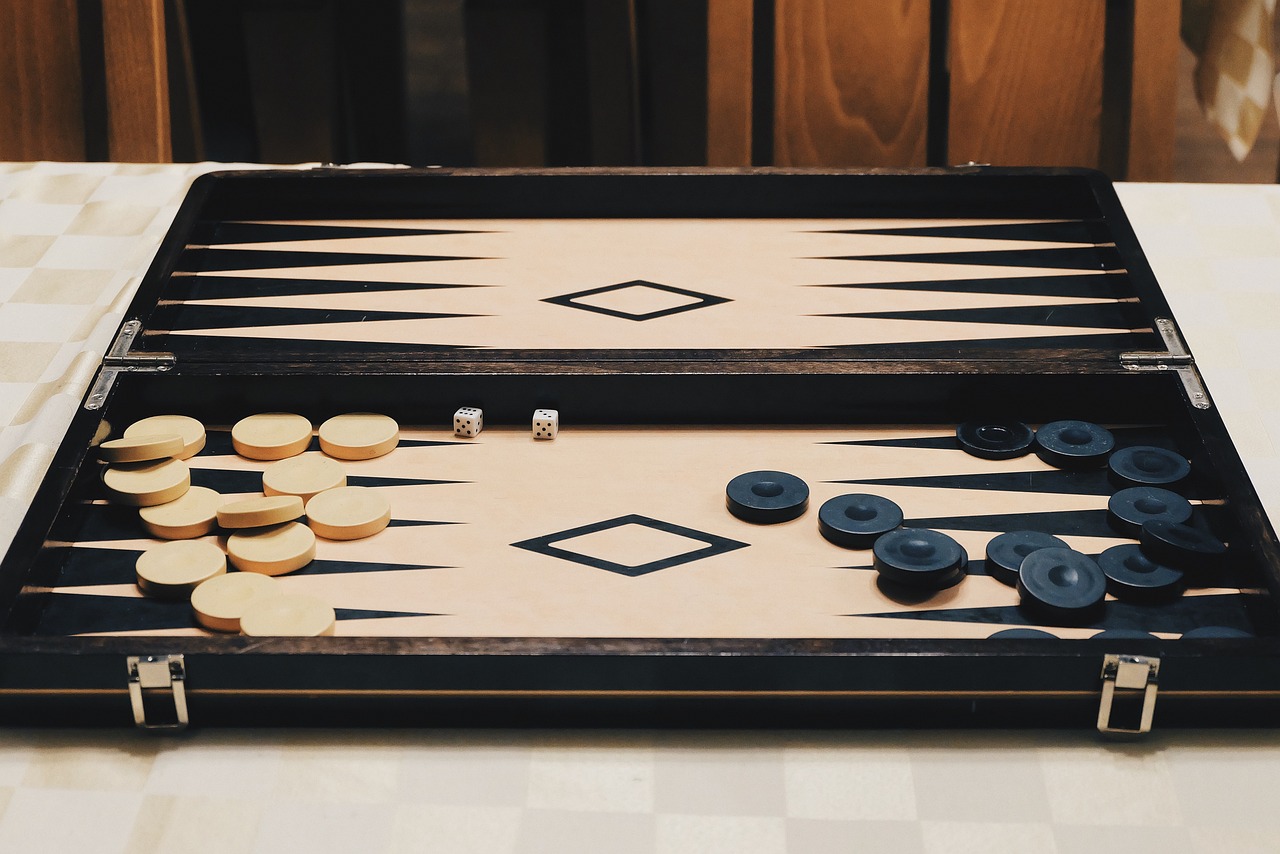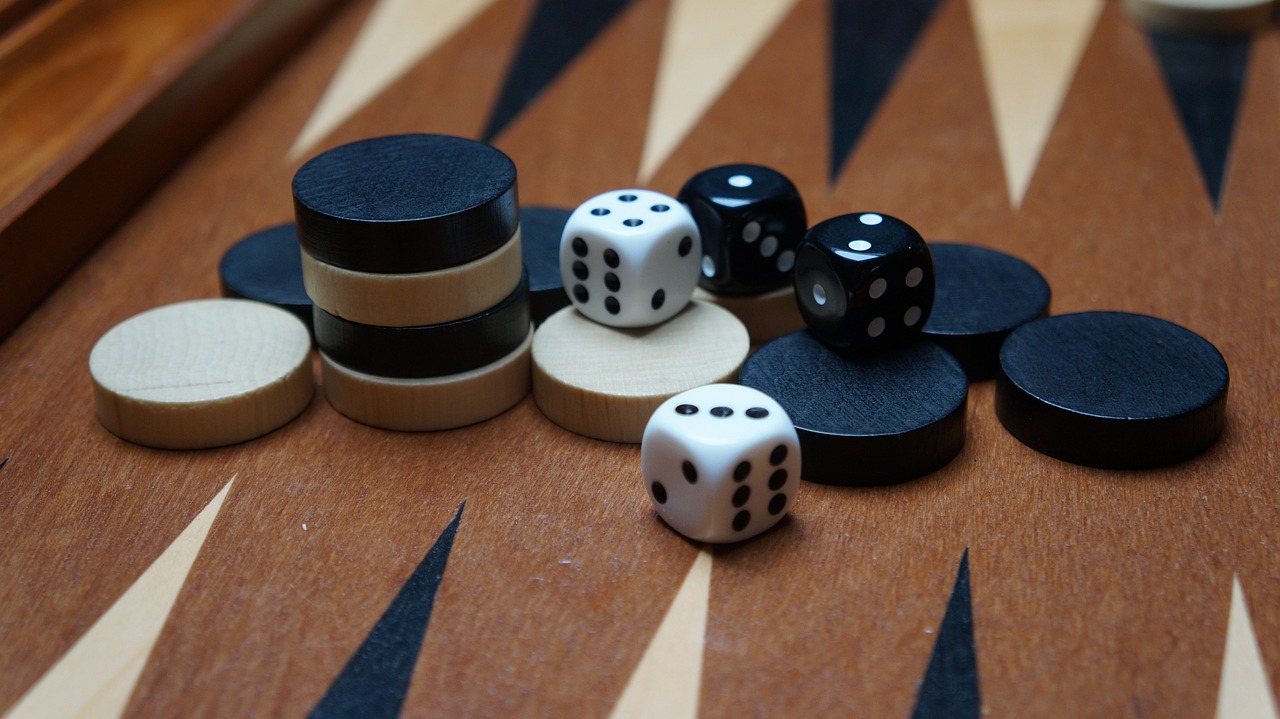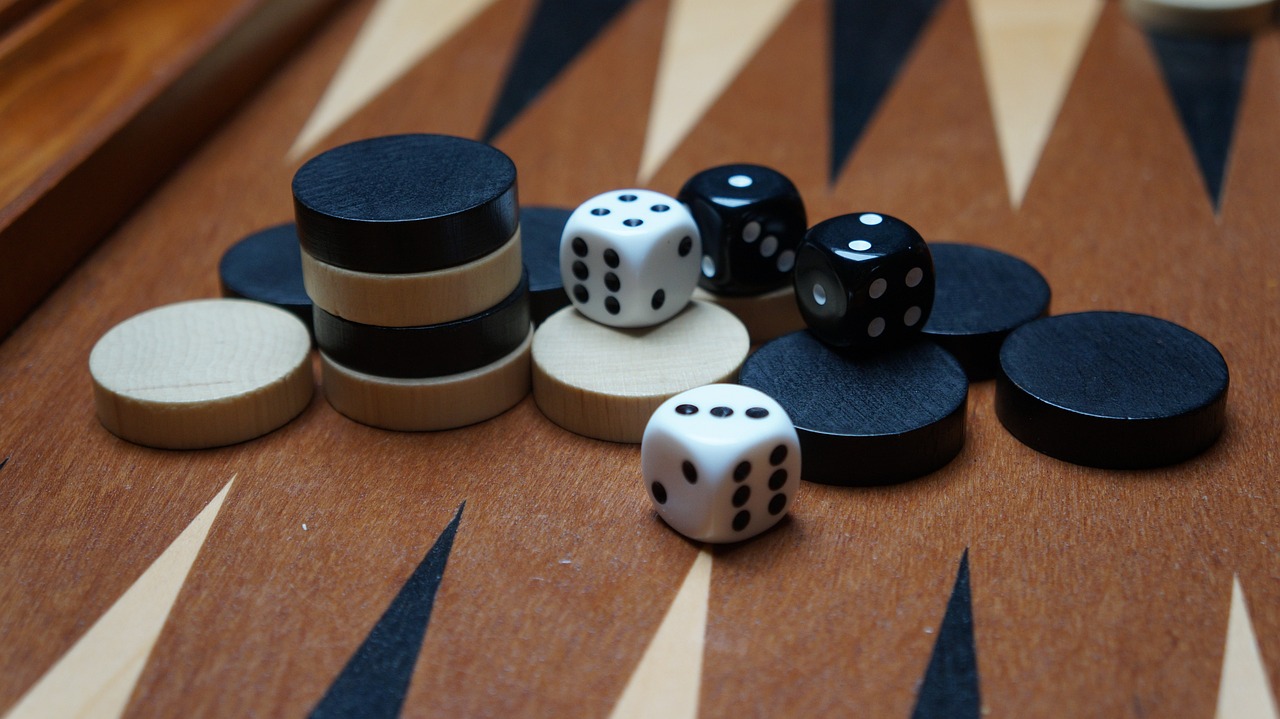This is another post for beginners to backgammon and will cover how points are scored in a backgammon match. Click the following link for more information about backgammon rules.
In backgammon tournaments, the common style of match play is used to determine a winner. Here, players are paired off with one another, with each pair playing a series of games to determine who will progress further into the tournament. Such a series of games is called a match. Though the name might suggest it, a single, standalone game is called a “money match”, regardless of whether any money is at stake. Such matches are played to a prespecified number of points, such as five points, with the winner being the player who reaches the predetermined number first. Knowing how to score in matches is essential if you want to win a game of backgammon!
Backgammon Points
For every game you win, you’ll receive one point, meaning that in a five-point match, you’ll have to win five games in order to secure the win. That being said, winning five games is not the only way to win a match in backgammon, as the game also features certain ways of upping the stakes of each game.
The first method for a quick win is by using a doubling cube, which you can use to raise the number of points in a single game. Such a cube is commonly included in most backgammon sets. They tend to be a cubical block larger than an ordinary die. The cube will be marked with the numbers 2, 4, 8, 16, 32, and 64, on each of its faces. The doubling cube is used to keep track of any increase in the stakes of a game, and also to document which player reserves the right to double next. As such, players take turns in being able to raise the stakes of a game, allowing your win to count for double than what it normally would.
Backgammon Stakes
At the start of a backgammon game, the doubling cube will be placed in the middle of the board, displaying its face with 64 on it. Despite the number suggesting otherwise, its value at the beginning of the game will be 1. After having started the game, if the player holding the cube feels that the odds are in their favour, they can offer the cube to their opponent and thereby raise the stakes of the game. Should the opponent accept the challenge, the points of the game will now be doubled, and they will accept the cube. If they refuse to accept the challenge, the game will immediately be lost at its current value. Stakes can always be doubled, meaning that there is no limit. If the value goes beyond 64, players will have to track the value mentally or on paper.
Gammon and Backgammon
Apart from the doubling cube, there are also alternative ways to increase the number of points at stake during a game. Should a player manage to bear off all of their checkers before their opponent has the chance to bear off even one, they will have played a “gammon”. A gammon is worth two points, which is compounded by the use of the doubling cube, meaning that the game’s winner will receive 2 points multiplied by the cube’s value.
When a player successfully bears off all of their checkers and the opponent has failed to bear off any of their own, in addition to having one or more checkers on the bar or the winner’s home board, they’ll have played a “backgammon”. Such a victory is worth three whole points, which, like with the gammon mentioned above, are multiplied by the value of the doubling cube.
Conclusion
These are the fundamental rules of scoring in a game of backgammon. The doubling cube, in addition to whether you manage to play a gammon or backgammon, can increase the points of a game. These effects are cumulative – for instance, a five-point game might not need five games to complete. Should a player manage to win by backgammon while having a doubling-cube value of two, they would score 6 points, ending the match after only a single game!







